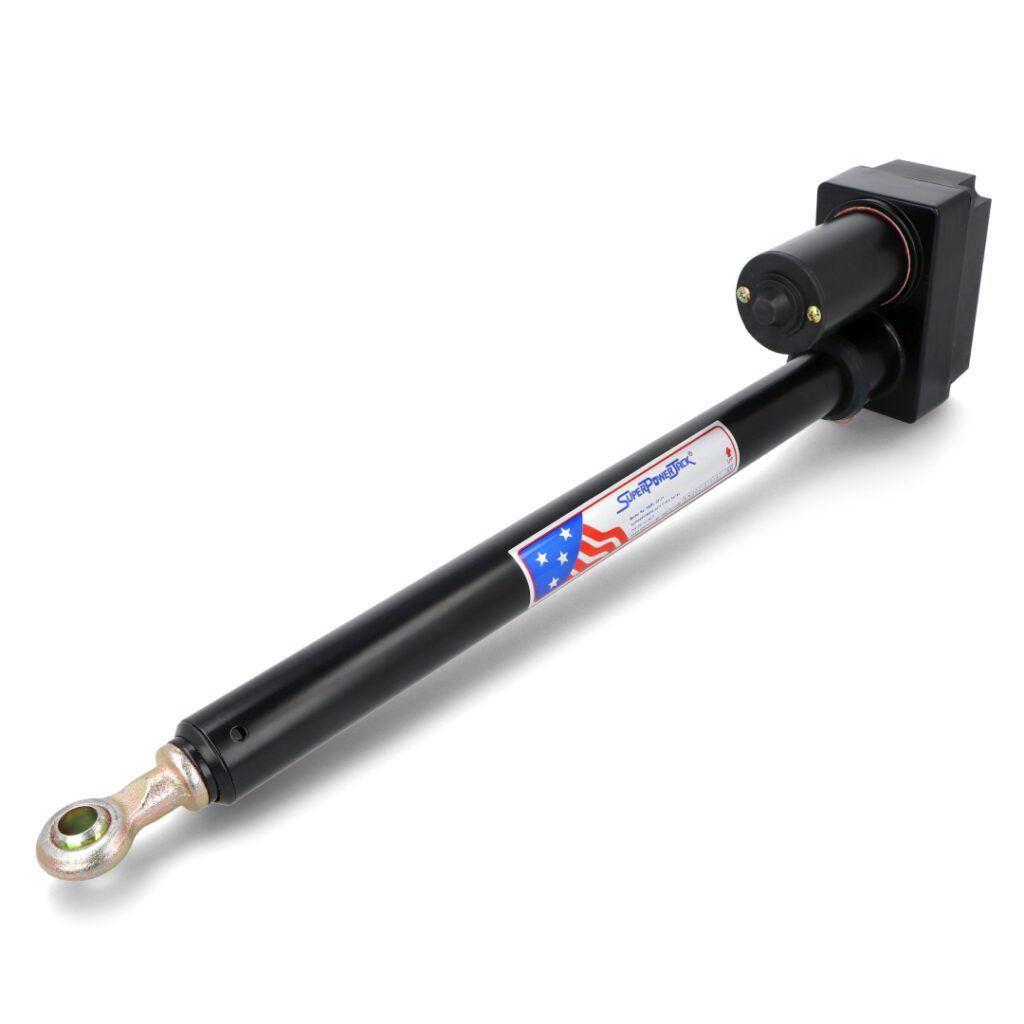Table of Contents:
The linear electric actuator is a popular component in the field of automation that is readily used in many projects due to its performance, practicality and reliability.
Every automation, robotics or electronics enthusiast should learn more about this simple device.
We explain what specifically characterizes the linear electric actuator, how it works and what advantages it has.
Also check out where it is most often used.
What is a linear electric actuator?
A linear electric actuator is a device that converts electrical energy into linear motion.
Unlike traditional hydraulic or pneumatic actuators, linear electric actuators work by converting electrical energy directly into reciprocating motion.
This makes them more precise, energy-efficient and easier to operate.
The basic component of a linear actuator is an electric motor, usually a DC or stepper motor.
It is usually paired with a gearbox, which reduces the speed of the motor while increasing the torque.
The gearbox is then connected to a guide or drive screw, on which the so-called “piston” or actuator stem moves.
piston or actuator stem.
The whole is embedded in a body that provides stability and protection from external conditions.
On the market you can find models with IP65 protection, such as the LAD 500N electric actuator.
The design solution described here makes the linear electric actuator capable of maintaining a suitable load even when the power is disconnected.
The multi-stage gearbox, especially the drive screw and movable nut, give the system its self-locking properties.
Without power, the piston cannot be moved – neither pushed in nor pulled out.
Of course, at the same time you need to remember not to put too much load on the actuator, which could lead to damage.
In Botland’s offer you will find models with a maximum load of up to 700 kg.
What are linear electric actuators used for and where are they used?
Linear electric actuators are used in a wide variety of industries, branches or electronic projects.
They play a special role in the increasingly popular automation and motion control processes.
They are most often used in such areas as:
1. industrial automation
The linear electric actuator is an integral part of industrial automation systems.
It is used to precisely control the movement of various components in a production line, including.
manipulators, transport platforms, or packaging equipment, among others.
The ability to smoothly adjust speed and position makes actuators an ideal tool in automated production processes.
2. medical devices
In the medical industry, linear actuators are widely used in various types of equipment, including operating tables, dental chairs and hospital beds.
Their precise control makes it possible to adjust the position of a given piece of equipment to the individual needs of the patient.
3. motorization
In the automotive industry, the linear electric actuator is used in many vehicle systems, such as the adjustment of seats, panoramic roofs and windows.
It provides smooth and precise control of the movement of various components.
At Botland, for example, you can find a linear actuator for a car’s central locking system.
4. renewable energy sources
With the development of the RES industry, linear actuators are also being used to adjust solar panels in photovoltaic installations, tracking the position of the sun during the day.
In addition, these components can control the angle of attack of blades in wind turbines, optimizing the efficiency of energy generation.
5 Robotics
Linear electric actuators are indispensable in robotics, where precise motion is crucial.
They are used in industrial robot arms, manipulators or feeding systems.
The fact that actuators can be connected to microcomputers makes it flexible to adapt these components to different tasks.
6. home applications
If you are passionate about electronics, you can use a linear actuator in your own project and, for example, modernize the interiors of your home – such a solution will work, for example, in systems for opening and closing windows or doors, as well as in monitoring.
What to look for when buying an electric linear actuator?
If you want to buy a linear electric actuator, pay attention to several important features of this product before placing an order.
First of all, determine the parameters , such as the maximum load, speed of operation, or extension of the device.
They should be adapted to the planned project.
It’s also a good idea to check the tightness class of the actuator’s housing, especially if you will be using it in an outdoor environment, where it may be exposed to moisture or dust.
Finally, make sure that the operating voltage of the selected model is suitable for the power source used.
Then you are sure to find a linear electric actuator that will do its job well.
How useful was this post?
Click on a star to rate it!
Average rating 0 / 5. Vote count: 0
No votes so far! Be the first to rate this post.




















